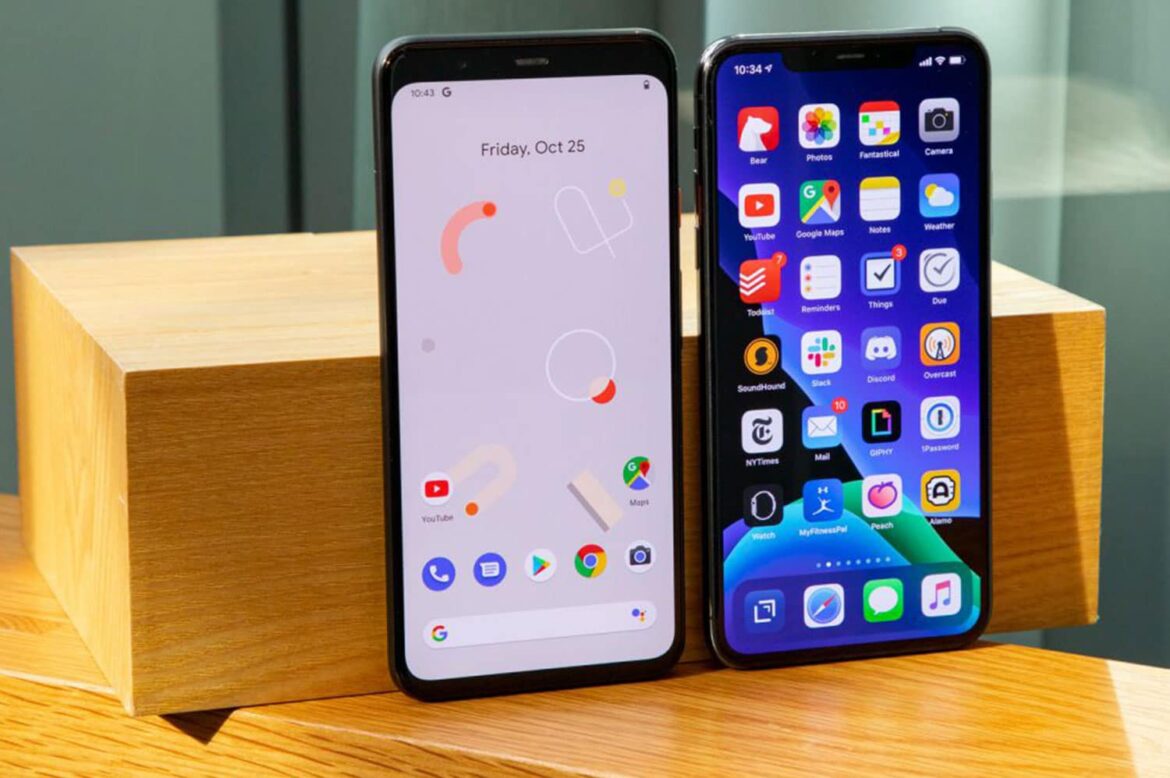1.4K
In the competition between the Google Pixel and the iPhone, it is not only the price but also the features that determine which smartphone is better for you.
Google Pixel vs. iPhone: how the smartphones differ
Google and Apple are among the most well-known technology companies. Both companies also produce their own smartphones. Google has the Google Pixel series, while Apple sells the iPhones. But what are the main differences between the two smartphone series?
- Operating system: The first major difference concerns the operating system. While the Google Pixel smartphones use Android, the iPhones run on Apple’s own operating system, iOS.
- Display: Apple refers to the displays of the iPhones as Retina Displays. The Super Retina and Super Retina XDR displays (since the iPhone X and iPhone 11, respectively) are said to offer high contrast, high color accuracy, and high brightness, among other things, according to Apple. Google has no name of its own for its screens.
- Connections: For a long time, Apple’s iPhones were traditionally equipped with a Lightning connector. Since the iPhone 15, however, the manufacturer has been installing USB-C connectors due to an EU requirement. The Google Pixel smartphones have been using the USB-C connector since the first generation.
- Digital assistant: Since the Pixel 4, you can use the Google Assistant on Google smartphones. By saying “Hey Google,” you can take a screenshot, turn on Bluetooth, or start a voice recording, for example. In 2024, Google added the AI assistant Gemini to the digital helpers. On your iPhone, you can use Siri and the command “Hey Siri” to start your digital assistant to send messages or ask about the weather, for example.
- Play Store and App Store: If you want to download an app, you can do so with a Google Pixel smartphone via the Google Play Store. If you have an iPhone, you can use the App Store for this. The big difference, however, is that apps from other sources can also be installed on Google phones, while everything has to go through the App Store with Apple’s.
- Processor: Since the Google Pixel 6, the company has been installing its own Google Tensor processors in its smartphones. Older models used Qualcomm Snapdragon processors. Apple has been using chips from the Bionic series since the iPhone 8, with the iPhone 16 dropping the Bionic designation. However, the letter A and the attached number remained (for example, the iPhone 16 has an A18 chip).
Google Pixel 9 and iPhone 16 in direct comparison
The Google Pixel 9 and the iPhone 16 are two comparable smartphones. Both models have their own strengths in terms of display, battery life and camera.
- Display: The Pixel 9 has a 6.3-inch display with a resolution of 1080 × 2424 pixels. The iPhone 16 has a smaller 6.1-inch display with a higher resolution of 2556 × 1179 pixels.
- Battery: The Pixel 9 has a 4,700 mAh battery. Apple does not provide a mAh specification for the iPhone 16, but it promises up to 22 hours of video playback and 80 hours of audio playback.
- Cameras: The Pixel 9 offers a 50 MP wide-angle camera, a 48 MP ultra-wide-angle camera and a 10.5 MP front camera. The iPhone 16 has a 48 MP main camera, a 12 MP ultra-wide-angle camera and a 12 MP front camera.
- Price: The Google Pixel 9 starts at 899 euros, while the iPhone 16 starts at 949 euros (as of October 2024).
- Dimensions: The Pixel 9 measures 152.8 × 72 × 8.5 mm and weighs 198 grams. The iPhone 16 is slightly more compact at 147.6 × 71.6 × 7.8 mm and weighs 170 grams.

